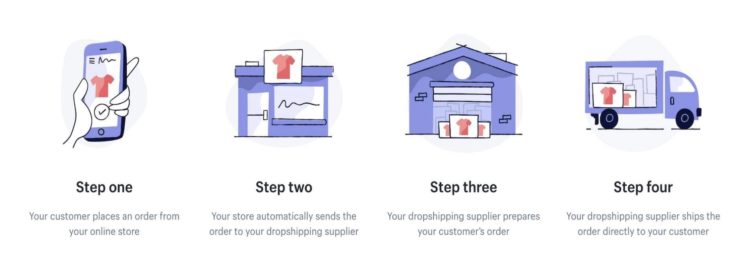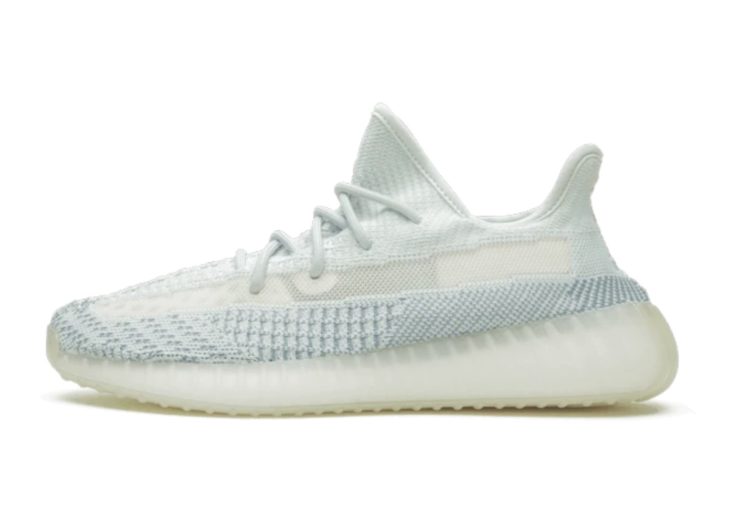With a 2025 market size estimated at $558 billion, the dropshipping business is changing how orders get fulfilled. More and more Africans are getting into the business. But knowing how to win chargebacks as a dropshipper makes all the difference, according to research.
If you canvas the hashtags on Twitter, you might find pundits speculating that dropshipping has no future. They say that the dropshipping business model is dead, that the market is saturated, and that the cost of fraud and chargebacks is too high.
But that’s not true. Factual data shows an impressive spike across various verticals of the dropshipping business, with a projected Compound Annual Growth Rate (CAGR) of around 29% from 2020 to 2025.

Dropshipping is here to stay, and it is an opportunity for some Africans to make a living. As global e-retail revenue is set to hit the all-time mark of $6.54 trillion by 2022, the future looks bright for dropshippers everywhere. Now, I know what you’re thinking. If that’s the case, why are many e-commerce entrepreneurs in the dropshipping vertical not making any money? And how does one get to win chargebacks as a dropshipper?
In this article, you will get answers to those questions.
You will learn why you might want to consider dropshipping (even if you live in Africa), how to set up a profitable and scalable dropshipping business, as well as some best practices for fighting dropshipping chargebacks professionally.
Let’s get started!
First, what is a dropshipping business, and should you consider starting one?
So many people are confused about dropshipping. The first thing you need to understand is that dropshipping is a strategy by which an e-commerce merchant fulfills customer orders. That means a dropshipper is primarily an e-commerce merchant. It’s vital to keep that in mind. And, in the latter part of this article, we shall examine why that’s important.
With dropshipping, the merchant does not stock the products they sell. They instead purchase, upon demand, the products from the manufacturer or wholesaler and ship them to the customer. They don’t handle or own the inventory in-house, which cancels out inventory management costs.
The dropshipping business model is popular among early-stage entrepreneurs, including in Africa, because it’s an easy way to test the waters in becoming your own boss, learn the downside in different markets and products, and earn a decent revenue while at it. And as you don’t need so much startup capital to set up a dropshipping business, you can quickly launch a profitable venture without ever worrying about raising venture capital funding.
Again, you don’t incur lots of overhead costs as a dropshipper. If you have a laptop or a decent mobile phone, you’re in business!

As a case study, 28-year-old personal shopper Amber turns in over £1M worth of luxury goods every year. Her strategy? Source exclusive luxury merchandise you can’t ordinarily find in stores and advertise on Instagram and WhatsApp to find homes for those products! Be it a pair of Kanye West designed Yeezy trainers worth £10,000 or an Hermès designer bag worth £55,000; her clients trust she can find those hard-to-get luxury brands that set them apart. She’s become really good at the job. Now she plans to scale the business into a multiple employee dropshipping company.

Second, to build a profitable dropshipping business, you must solve unique customer needs.
There are numerous Ambers out there, but not many of them are successful dropshippers with £1M annual revenue. If you want to set up a successful dropshipping business, you must first think of why you want to do it. Ask yourself: Is there a customer need to fill? Can I make money solving that problem? And where can I source my supplies?
If you’re convinced there’s a need to solve profitably, then you can proceed with setting up your business. For starters, you can use Shopify’s Oberlo marketplace to nail down your niche and hunt for things that pique your interest. Then add products directly to your Shopify store with Oberlo. Many dropshippers agree that Oberlo helps you find high-potential products, hand-pick your product photos, edit product descriptions and titles, and give your store a personalized vibe, so customers love coming.
But that’s just one step in a long journey to dropshipping success. Next, you need to get the word out. Just because you’ve built a fantastic online store doesn’t mean customers will come automatically. Taking a cue from Amber, you can use different Social Media platforms and offline networks to promote your offering. And if you’re using PayPal for payment processing, you can integrate Auto Sweep to automatically remit your PayPal balance to your bank account every business day.
Scaling up your business could be challenging, but if you build a reputation as a reliable dropshipper, growth can come faster than you think. Again, you plan for growth; it doesn’t just happen.
A pivotal precursor to growth is having the right pricing strategy. Figure out the best pricing model that works for your dropshipping business. For Amber, instead of asking for a markup to her products’ base price, she chose to include her percentage in the base price and offer that rate to clients. You can do the same thing.
Nevertheless, you must be aware of the fact that running a dropshipping business isn’t without risks. Due to the low entry barrier, profit margins might be slim. The same supplier you work with could be serving tons of other dropshippers as well.
And then there is the issue of shipping costs, order returns, frauds, and chargeback. As your store begins to grow, there are bound to be credit or debit card chargebacks. And if you get an excessive chargeback and disputes, you might lose your payment processor. That’s why we started by highlighting that dropshipping is an e-commerce business, and chargeback has become an existential threat to e-commerce businesses.
Those dropshipping companies that thrive on excellent customer relationships have learnt to manage those chargebacks professionally. This brings us to the third lesson on our list.
Third, you need to learn to fight dropshipping chargebacks professionally.
Here are some numbers that might interest you. On the exciting side, e-commerce and dropshipping profits have reached over $4 billion, a 7 percent year-on-year increase for the last ten years.
But less exciting is the available data that shows that retailers’ losses to Card-Not-Present fraud could reach $130 billion by 2023. And the cost of false declines—which plague the entire e-commerce industry—has dangled from $118 to $331 billion in the U.S. alone. Analysts say that dropshippers get a higher dose of false decline and as many as 30% of rejected orders are false declines.
With those numbers at the back of your mind, let’s talk about securing your shop from the fraudulent chargeback risks.
Chargebacks happen when customers call their bank or card network and dispute a charge. The bank will deduct the transaction charge from your account, and you will have to go through lengthy processes to invalidate the deduction.
If you can show compelling evidence in your favor, you could win the dispute and regain your money. But due to the complicated process of fighting chargebacks these days, it can be challenging to win a chargeback as a dropshipper.
Among other things, the customer or their bank may apply a different chargeback reason code from what you thought. Or the evidence you have might be insufficient to establish the legitimacy of the transaction. And even when you do win, you still lose money due to non-negotiable chargeback fees.
Hence, it’s always smarter to take precautionary measures to avoid chargebacks. Source quality products and only work with reliable suppliers, keep your eyes open when taking orders, and use tracking systems in your shipments. Again, remember that your relationships with your clients are vital. Provide excellent customer service. Use tools such as Help Scout to automate responses and optimize efficiency.
Now, as a pro tip, the best approach to mitigating the risk of chargebacks as a dropshipper is by getting professional help. While you can use the information above to limit vulnerability, the fraud landscape is sophisticated nowadays. Safeguarding your dropshipping business against fraudulent chargebacks requires in-depth mechanisms that combine data and expert fraud detection tools to give you the best advantage and help you win more cases.
And Chargeflow.io is one of the most comprehensive chargeback and dispute automation service built for e-commerce businesses. Chargeflow.io doesn’t just help you win chargebacks as a dropshipper; they give you insightful data to help you grow your e-commerce business with ease. Chargeflow.io leads the industry with +75% Win-Rates on average, which is 2X more than the industry standard.
